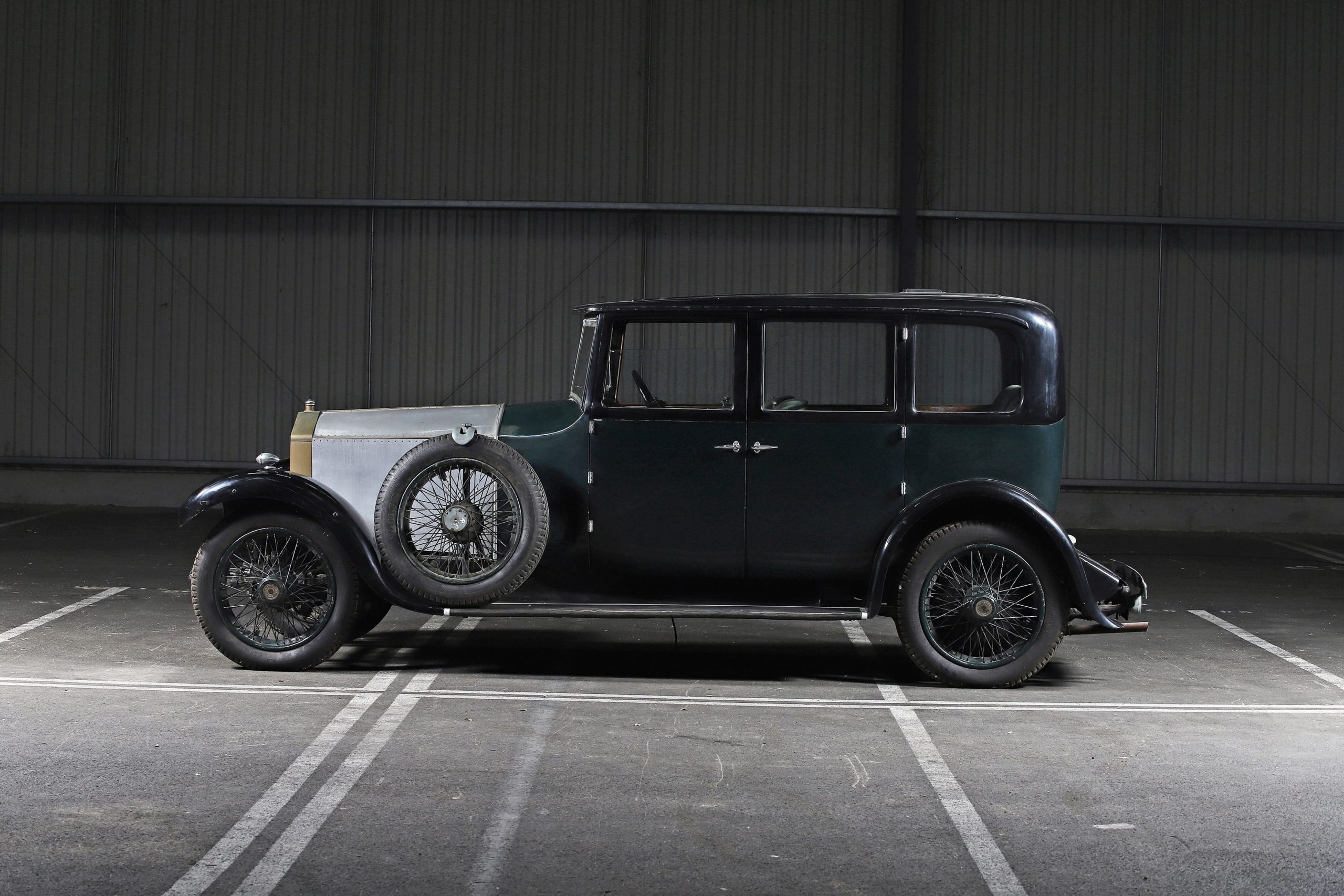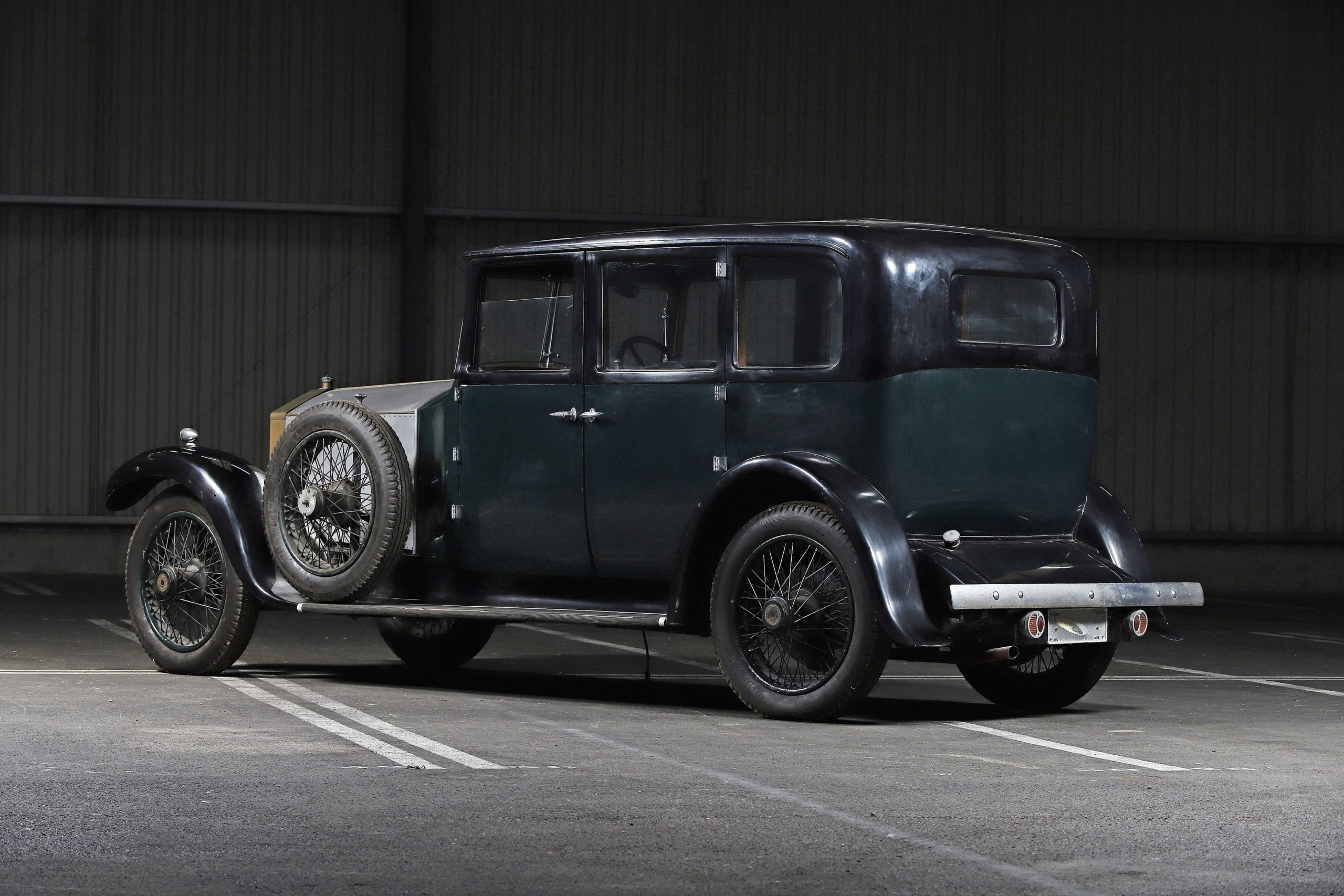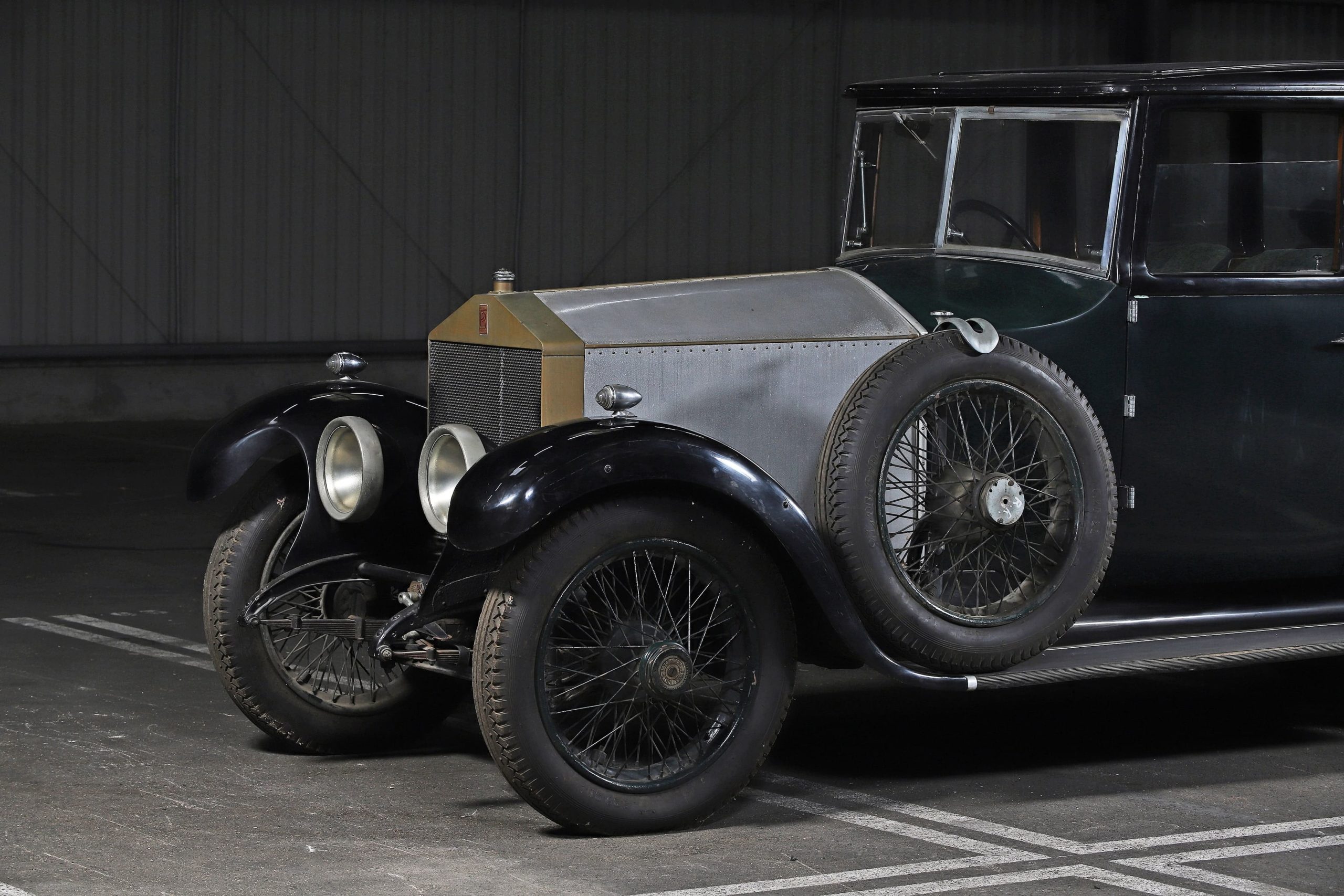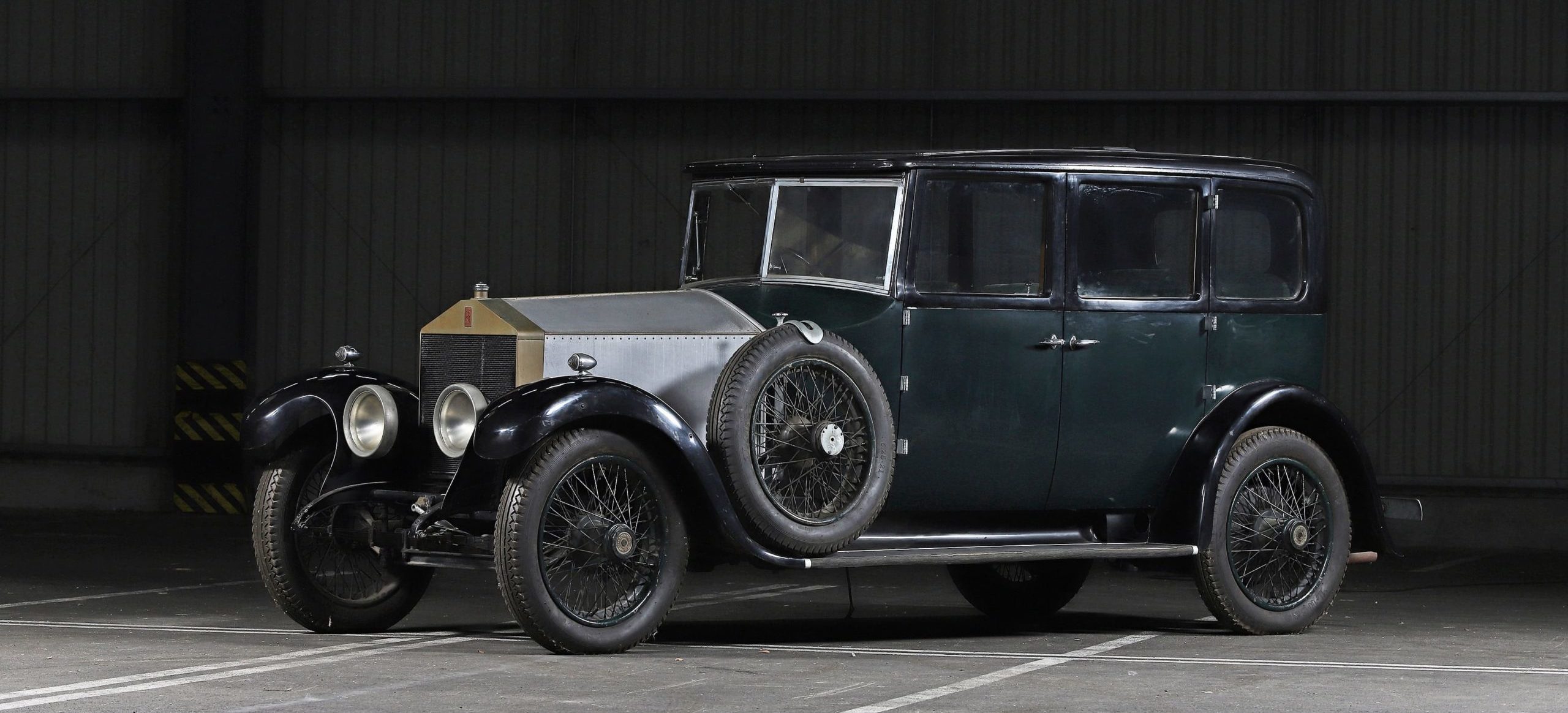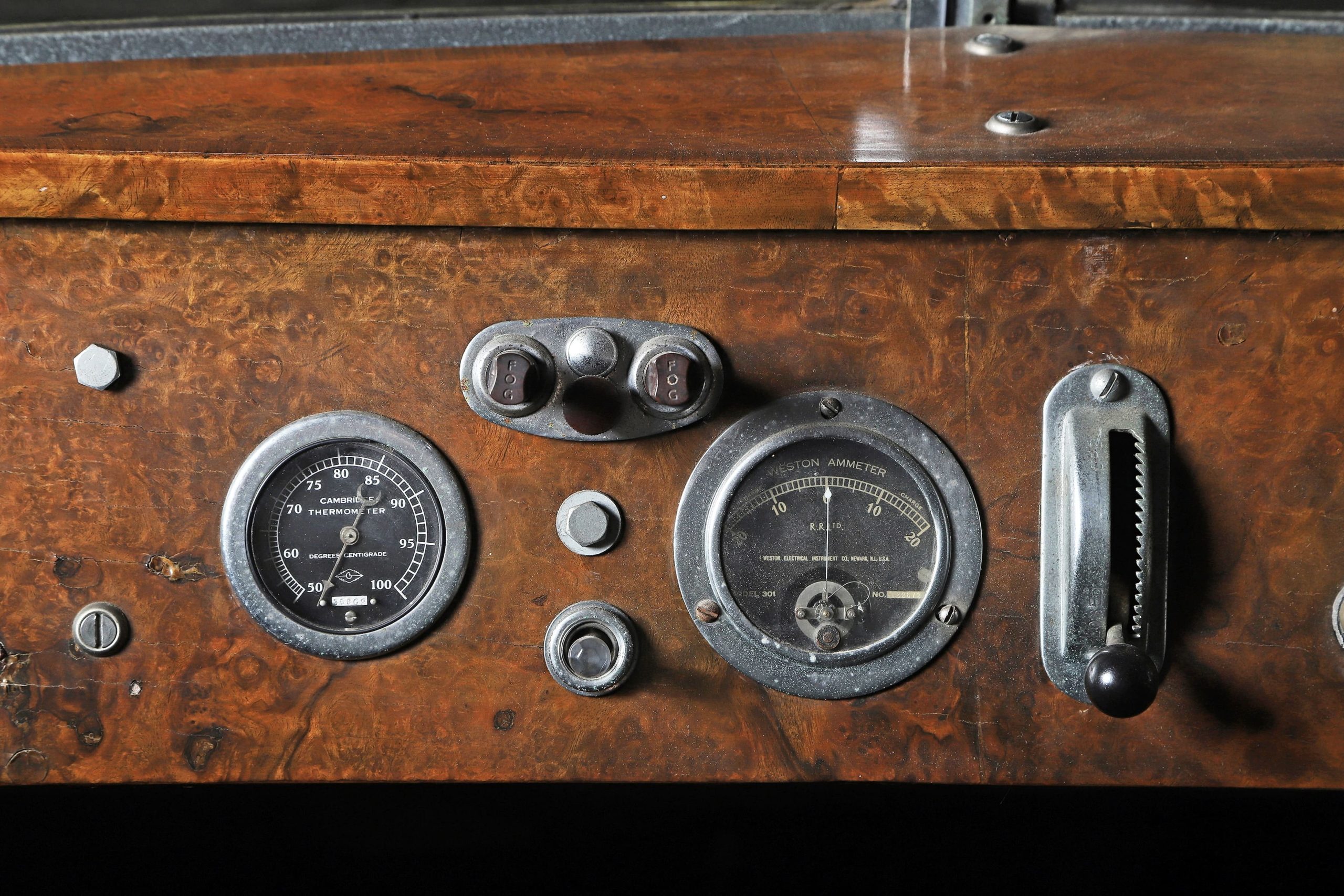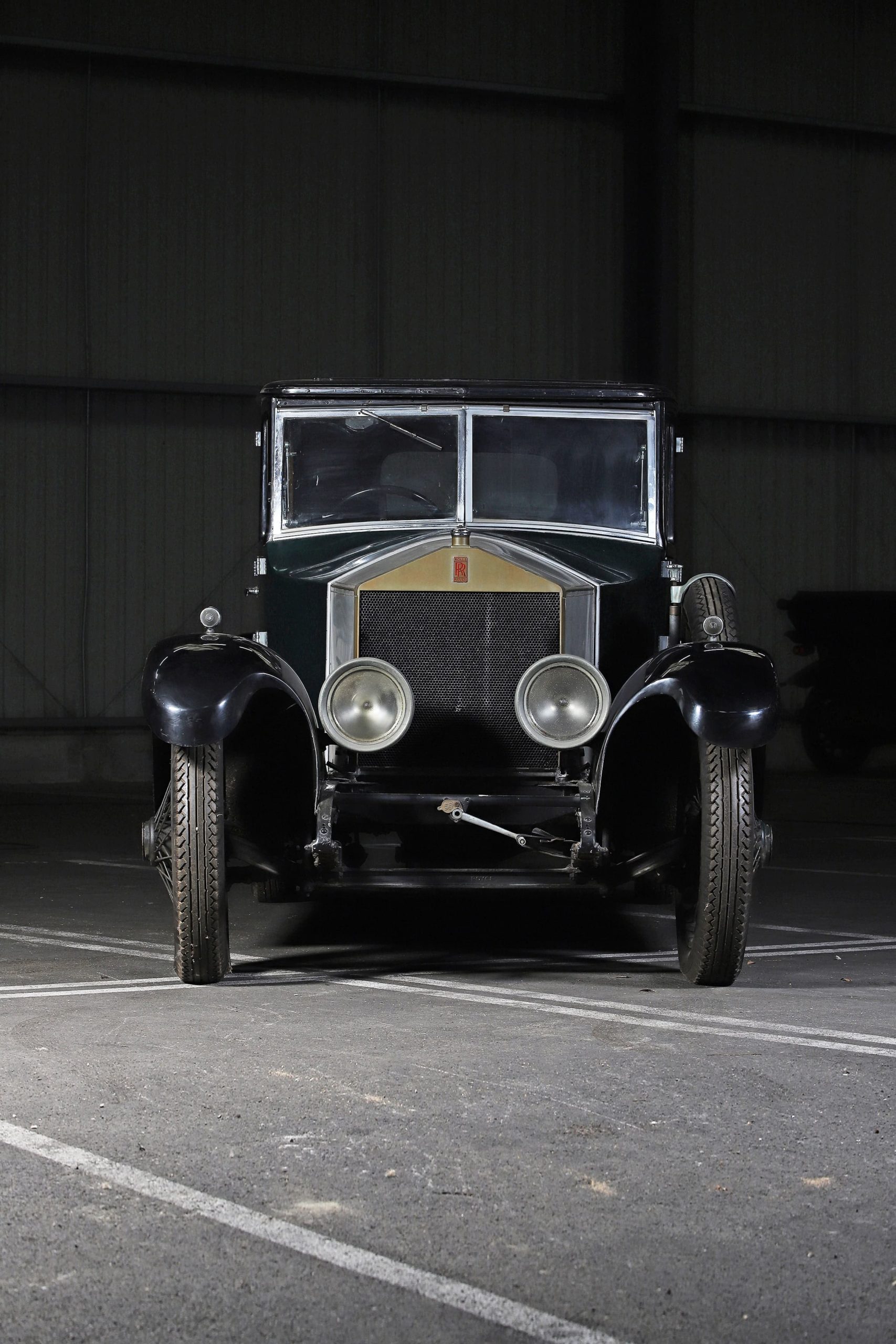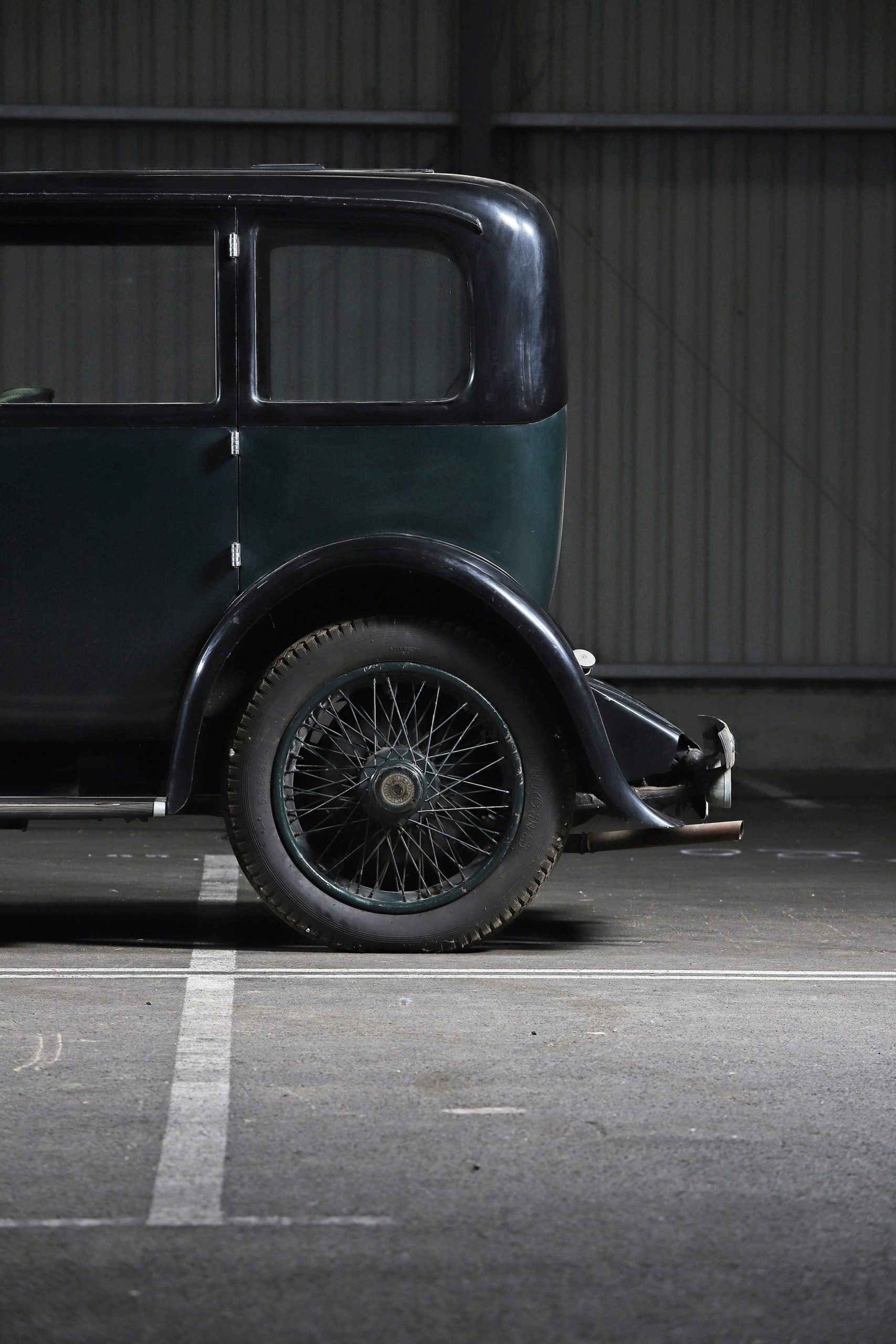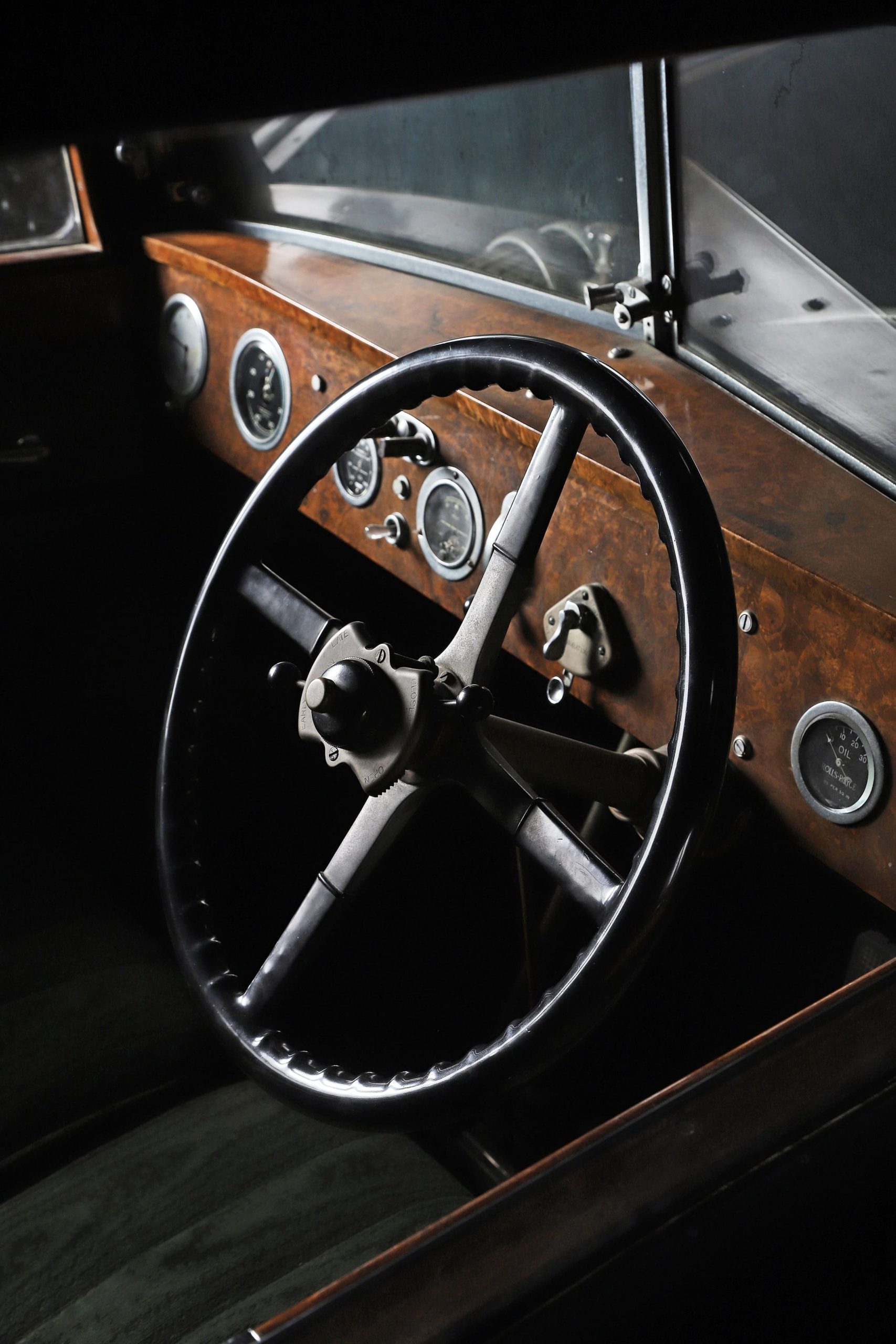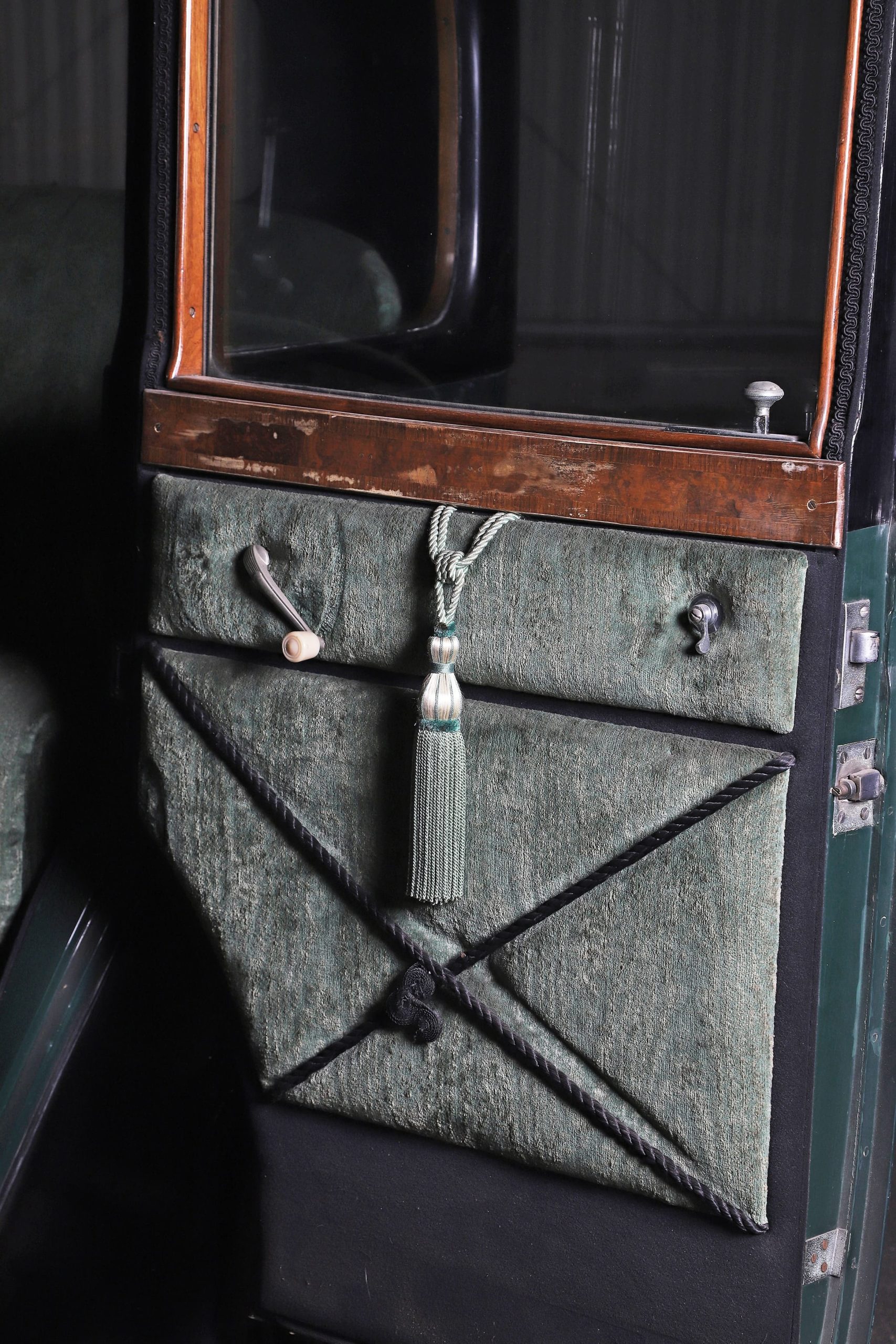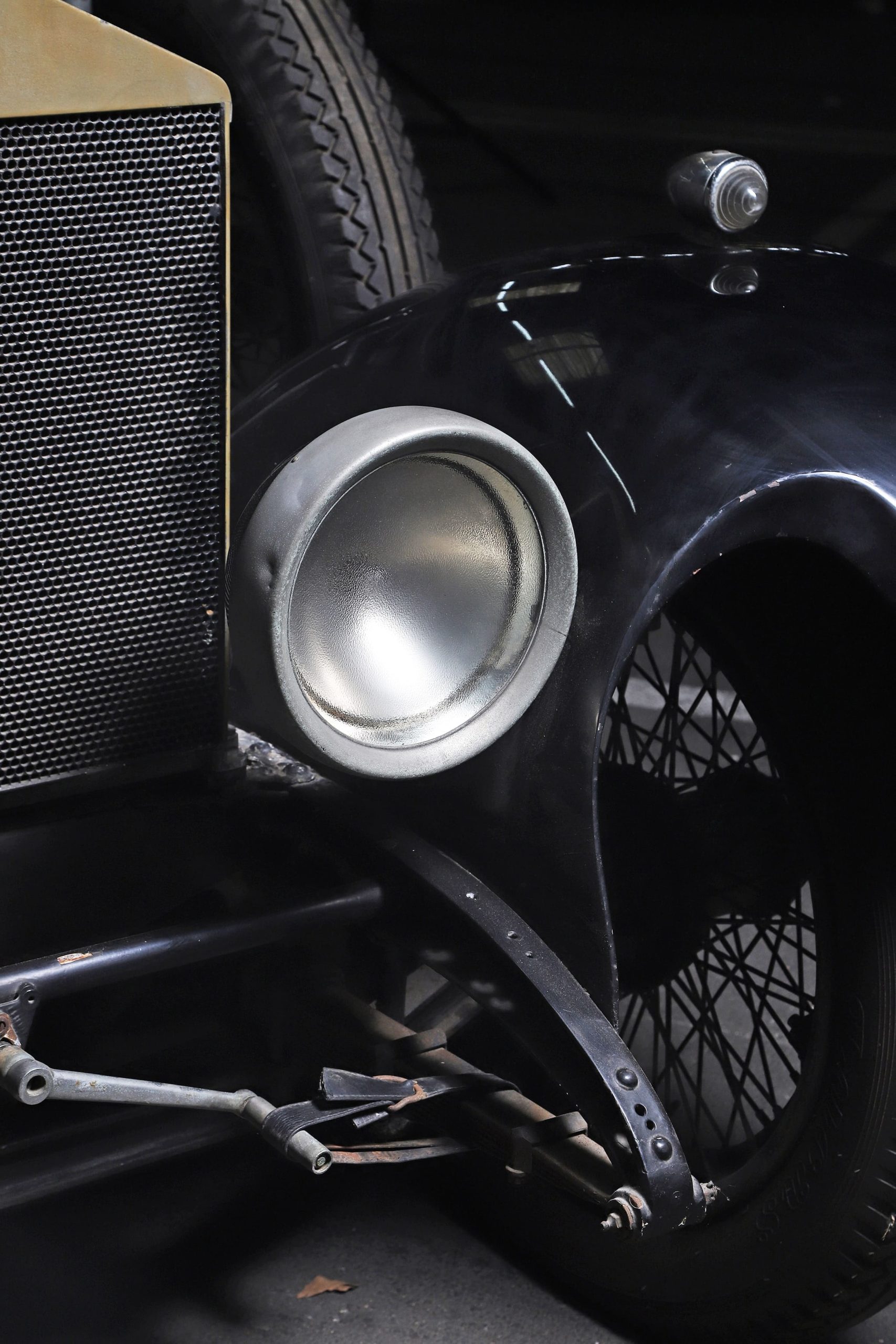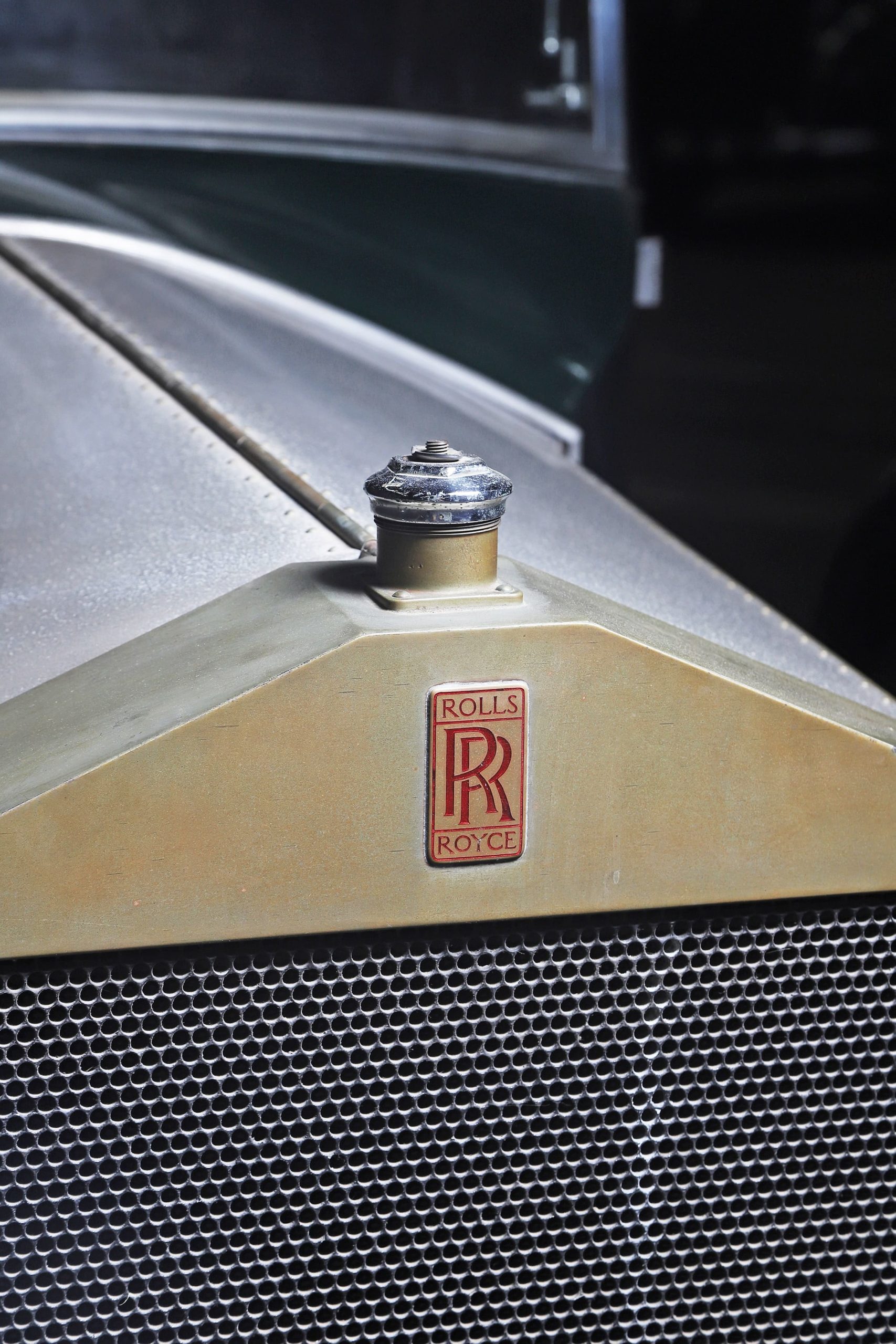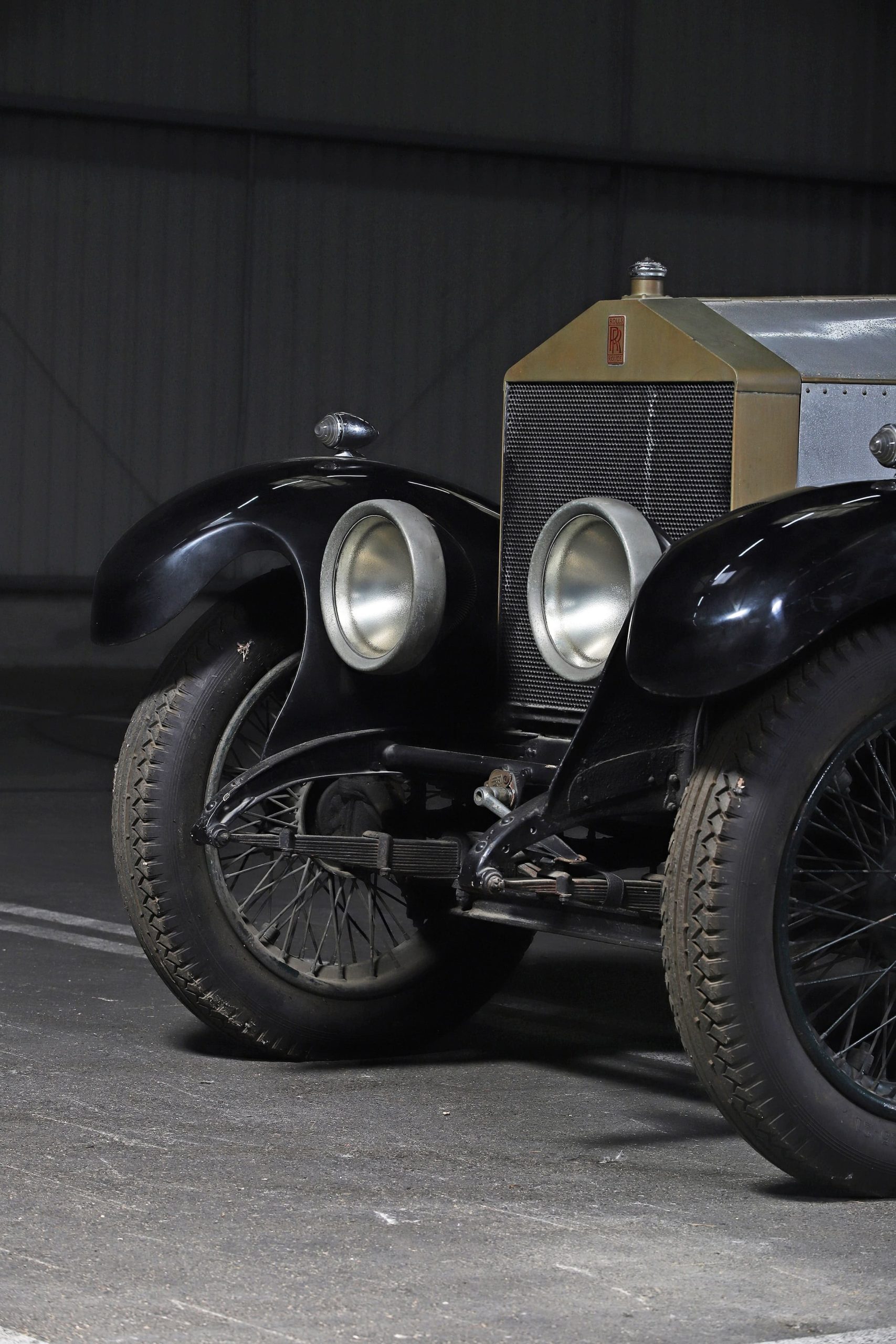Rolls Royce Twenty - 1922
— The baby Rolls Royce —- Model The first true production Rolls Royce dedicated to city driving without a chauffeur.
- Features A true Rolls Royce motorcar, powered by the six-cylinder engine with unrivalled build quality.
- Bodywork A 20HP car dotted with the elegant Mulliner bodywork.
- Condition A complete car with a superb patina.
- Atmosphere The 20HP is one of the main cars of the Downton Abbey series.
The Rolls Royce Twenty, also known as the 20HP but quickly nicknamed the Baby Rolls Royce, was designed to allow the company’s customers to drive their own cars, particularly in city traffic, where the compact car was certainly more at ease than the huge Silver Ghost cars. It was truly the first production Rolls Royce compact car.
A world-famous brand from its beginnings
In the aftermath of the First World War, the context was rapidly changing with a move towards re-industrialisation. Road infrastructure was improving as the use of the automobile expanded, aided by the development and sale of more popular cars.
Rolls Royce, which had made most of its money building aircraft engines since the outbreak of war in 1914, including the famous 20.4-litre V12 Eagle, intended to continue this lucrative business while, at the same time, planned to return to its prestige by producing exceptional automobiles.
Indeed, the brand created in 1904 and known for its slogan “Best car in the World” has never lost the high standards of its founder, Henry Royce, known for his perfectionism and rigour. His association with a young aristocrat, automobile enthusiast and pilot, Charles Rolls, gave birth to the first Rolls Royce cars presented at the 1904 Paris Motor Show.
The 10 HP, launched in 1904, was the very first Rolls Royce in history. But it was another model that established Rolls Royce’s worldwide reputation, the exclusive, custom-built Silver Ghost, whose resounding commercial success led the brand to build new workshops in Derby in 1908. Customers also appreciated the quality of the services offered. Each car was sold with a service booklet, called the “Body Card”, in which all the maintenance and repair work carried out by the company was noted.
Rolls Royce was then no longer selling production cars, but only custom-made six-cylinder ones. By the time the First World War broke out, Rolls Royce had already established its reputation around the world, with the most famous customers being crowned heads and great families, from the Maharajas of India to Tsar Nicholas II. In contrast, the British royal family remained loyal to Daimler.
The brand’s management was shaken by the death of Charles Rolls in 1910 while flying his Wright biplane. As for Henry Royce, his frail health led him to settle on the Côte d’Azur where he continued to manage the brand with a team of engineers.
After the war, the brand was to evolve profoundly, on the one hand with a short-lived attempt to produce its cars in the United States, thanks to a licensing policy, and on the other hand by reviving the production of the first production Rolls Royce in 1922, the Twenty.
More compact than the huge Silver Ghost, the Twenty, also known as the 20HP, aimed to complete the brand’s offer with a car suited to cities’ growing traffic.
©Aguttes
The Twenty, truly, the first Rolls Royce compact production car
Quickly dubbed as the “Baby Rolls-Royce”, the 20HP was no exception to the company’s high standards of quality and finish. Suited for city traffic an driveable without a chauffeur, as requested by some customers, the Twenty was also perfectly suited to long journeys.
The first generations of the Twenty are identifiable by the radiator flaps being placed horizontally rather than vertically, as was then the norm at Rolls Royce. Actually the latest 20HP cars came back to the vertical placement.
As for the engine, although the brand remained faithful to the six-cylinder engine, it decided to study a new engine, the first with overhead valves, with a displacement of 3,127 cm3, consisting of a single cylinder block with a detachable cylinder head and a single ignition. The chassis was shorter than traditional Rolls Royce cars and had rigid front and rear axles suspended by semi-elliptical springs.
Braking was provided only on the rear wheels before the introduction of drum brakes with mechanical servo on all four wheels in 1925. The Twenty was later equipped with hydraulic shock absorbers.
The driver, not the chauffeur anymore (!), has a three-speed gearbox with the gear change initially placed in the centre of the passenger compartment, before being replaced in 1925 by a four-speed gearbox with the traditional gear change to the right of the driver. The driver could expect to reach a maximum speed of 97 km/h.
As was customary at the time, Rolls Royce manufactured only the chassis and mechanics of the Twenty. Indeed, customers had the choice of commissioning the UK’s most famous coachbuilders to build a dedicated body. At the time, the big names were Barker, Park Ward, Thrupp & Maberly, Mulliner, Hopper, Kellner and Gurney Nutting.
The Twenty was produced in 2,940 units between 1922 and 1929. It became a mainstay of the company and was replaced by the 20/25 and then the 25/30 4.3 litre in 1936.
In 1931, Rolls Royce acquired Bentley, which had gone into receivership, and produced a sportier version of these cars, nicknamed the Bentley Derby because Rolls Royce manufactured them in Derby. This is the case of the 1939 Bentley 4.5l from the ANNA LISA collection.
The Rolls Royce Twenty from the ANNA LISA collection
The ANNA LISA Art On Wheels example is one of the very first 20HP cars, produced in 1922 with a Mulliner bodywork. The RHD car is equipped with a three-speed gearbox, rear wheel brakes and the semi-elliptical spring suspension typical of early models.
Today it has a very nice patina highlighting its dark green bodywork with black roof and aluminium bonnet, fronted by the grille with horizontally placed radiator flaps, as was the practice on the early 20HPs. The beautiful interior is dressed in green velvet.
The car is complete with its original six-cylinder engine, not blocked, which still includes the original Rolls-Royce carburettor. It needs to be restarted in order to resume long distance journeys, or shorter elegant outings in the English countryside.
©Aguttes
